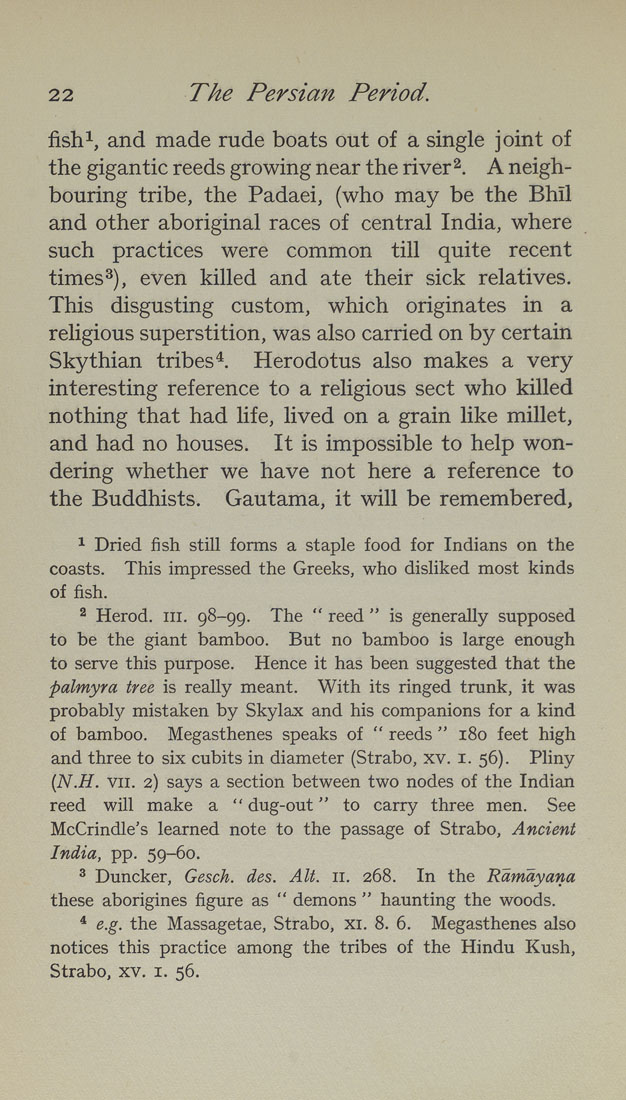22 The Persian Period.
fisfii, and made rude boats out of a single joint of
the gigantic reeds growing near the river2. A neigh¬
bouring tribe, the Padaei, (who may be the Bhil
and other aboriginal races of central India, where
such practices were common till quite recent
times^), even killed and ate their sick relatives.
This disgusting custom, which originates in a
religious superstition, was also carried on by certain
Skythian tribes*. Herodotus also makes a very
interesting reference to a religious sect who killed
nothing that had life, lived on a grain like millet,
and had no houses. It is impossible to help won¬
dering whether we have not here a reference to
the Buddhists. Gautama, it will be remembered,
^ Dried fish still forms a staple food for Indians on the
coasts. This impressed the Greeks, who disliked most kinds
of fish,
2 Herod, iii, 98-99. The " reed " is generally supposed
to be the giant bamboo. But no bamboo is large enough
to serve this purpose. Hence it has been suggested that the
palmyra tree is really meant. With its ringed trunk, it was
probably mistaken by Skylax and his companions for a kind
of bamboo. Megasthenes speaks of " reeds " 180 feet high
and three to six cubits in diameter (Strabo, xv, i. 56). Pliny
{N.H. VII. 2) says a section between two nodes of the Indian
reed will make a " dug-out" to carry three men. See
McCrindle's learned note to the passage of Strabo, Ancient
India, pp, 59-60,
^ Duncker, Gesch. des. Alt. ii, 268, In the Rdmdyana
these aborigines figure as " demons " haunting the woods.
* e.g. the Massagetae, Strabo, xi, 8. 6. Megasthenes also
notices this practice among the tribes of the Hindu Kush,
Strabo, xv. i. 56.
|








